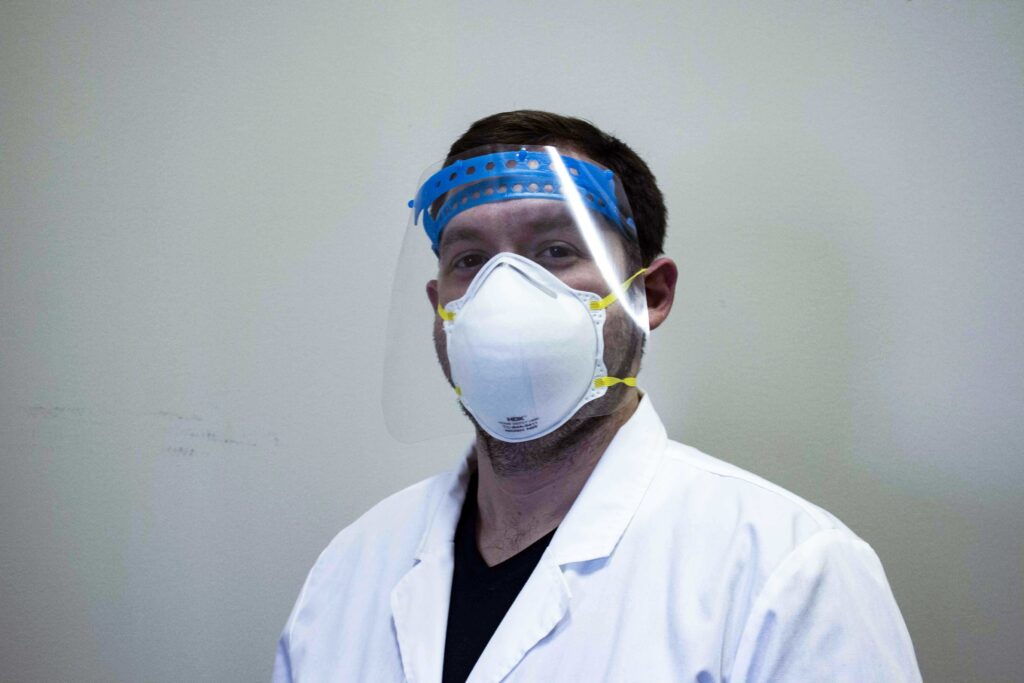Not only ventilators and hand sanitizers are in high-demand amid the coronavirus outbreak. Face shields are also needed by many healthcare workers to protect themselves when treating patients so as to avoid a potential infection.

Face masks provide protection against infection as long as they are properly handled. An even higher degree of protection is ensured by wearing a face shield, which covers the entire face, such that any contaminated droplets don’t come into direct contact with the faces of medical staff.
Both types of face protection are in very short supply That’s why many researchers are looking for innovative approaches to scale up production, as in the case of Northwestern University,
Researchers Chad A. Mirkin and David Walker came up with a new method that can create 1,000 components for face shields per day with a single 3D printer. The printing technique called “high-area rapid printing” (HARP) uses a printer that stands 13 feet (4 meters) in height, which can print half a yard in one hour (0.45 meters/hour).
“Even fleets of 3D printers are having difficulty meeting demand for face shields because the need is so enormous,” Mirkin said in a press release. “But HARP is so fast and powerful that we can put a meaningful dent in that need.”
Face shields have three main components: a plastic headband, a clear plastic sheet and an elastic. The three elements are joined together by clipping the plastic sheet into the headband, which is secured to the head of the person wearing an elastic band.
The team at Northwester is focused on the manufacturing of the headband. They are currently producing 1,000 per day, using the printer 24/7 with teams of volunteers that are working in six-hour shifts to keep production continuously going.
Meanwhile, they partnered up with a local manufacturing company to obtain the plastic shields and with another company to sanitize and package all the components into easy-to-assemble kits, shipped to hospitals. The masks can be washed and reused; the researchers noted.
The HARP technology used by the researchers is based on stereolithography, which is a 3D printing technique that turns liquid plastic into solid objects. The elements are printed vertically, using ultraviolet light to transform the liquid resins into hard plastic. The printer can produce hard, elastic and ceramic pieces, which can have many purposes ranging from cars to fashion.
Most 3D printers have trouble with heat, generating a lot when working at fast speeds. This leads to high hot surface temperatures and can cause printed parts to crack and deform. The faster and bigger the printer works, the more heat it generates.
This problem is solved with the HARP technology, using a nonstick liquid that removes heat. “Our technology generates heat just like the others,” Mirkin said. “But we have an interface that removes the heat.”
Was this helpful?



